Lizards come in all types of colors, patterns, and color combinations. They can mimic their environment, which can be leafy ground in deciduous woodlands.
Lizards may also look completely different from their environment, as is the case with most red-tailed lizards.
The contrasting color of the species helps it survive a large number of predators.
Lizards can have red tails throughout their lifespan or they might only turn red at a given moment, such as when looking to capture the attention of a prospective mate.
Table of Contents
Are Red-Tailed Lizards Poisonous?
Lizards with red tails are often confused with poisonous or even venomous species.
In reality, these types of lizards aren’t poisonous to humans.
They rely on contrasting red colors to keep predators away as vivid red coloring is sometimes associated with dangerous prey for predators.
Apart from red tails, many of these lizards also have contrasting upper body coloring. This type of coloring also has the role of making the lizards less appealing to predators.
Some common myths are based on the idea that red-tailed skinks have neurotoxic venom.
At the moment, this idea isn’t supported by the scientific community.
Only Heloderma lizards are known to be poisonous at the moment, but these lizards don’t have red tails and they represent a very small number of lizards around the world.
Lizards also rarely bite. They prefer to hide when seeing humans.
The following species of lizards with red tails are some of the most common around the world.
Lizards with Red Tails
These are some of the best-known lizards with red tails in the world.
1. Western Red-tailed Skink
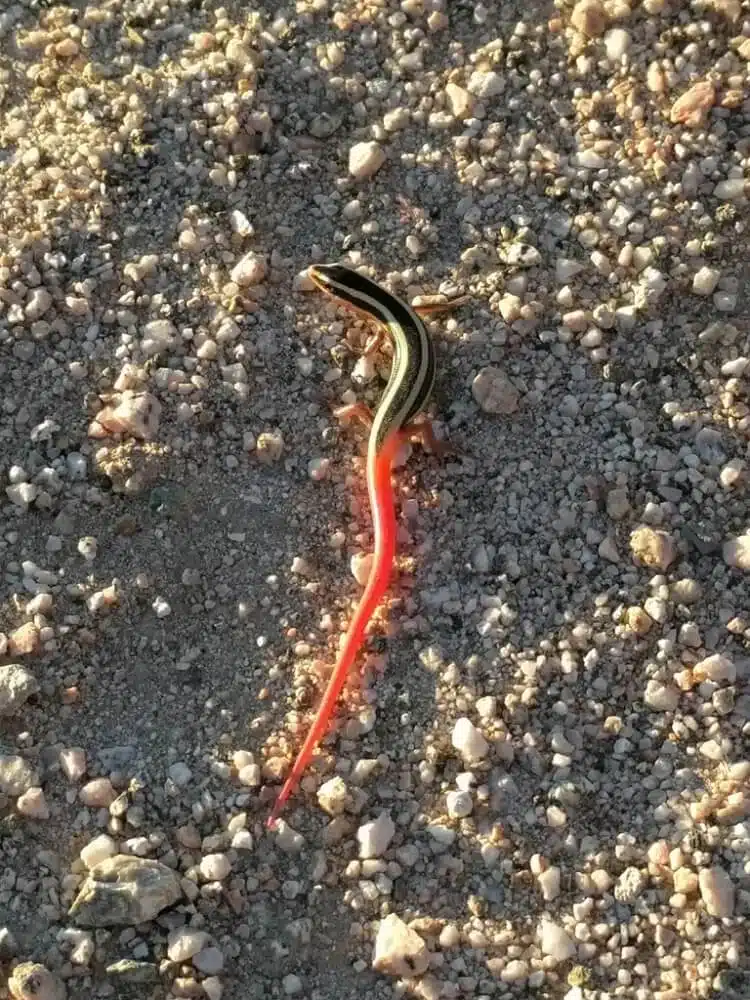
Western Red-tailed Skinks (Plestiodon gilberti rubricaudatus) are California natives. These lizards are found in various areas of the state, even at high elevations.
Growing to a size between 3 and 4.5 inches, the lizards aren’t easily spotted.
It lives underground in loose soil or under leaves, which means it rarely comes out in direct sunlight.
This species comes in different colors. It can have a gray or an olive color with a red tail.
A redhead is also common to the male Western Red-tailed Skink. This coloration is only seen in males when they’re looking for a mate.
Some of these skinks have black stripes on the body.
Tied to moist habitats, the Western Red-tailed Skink is found across chaparral and woodlands.
It can also live in areas close to woodlands if they have sufficient vegetation to create moist habitats.
2. Mole Skink
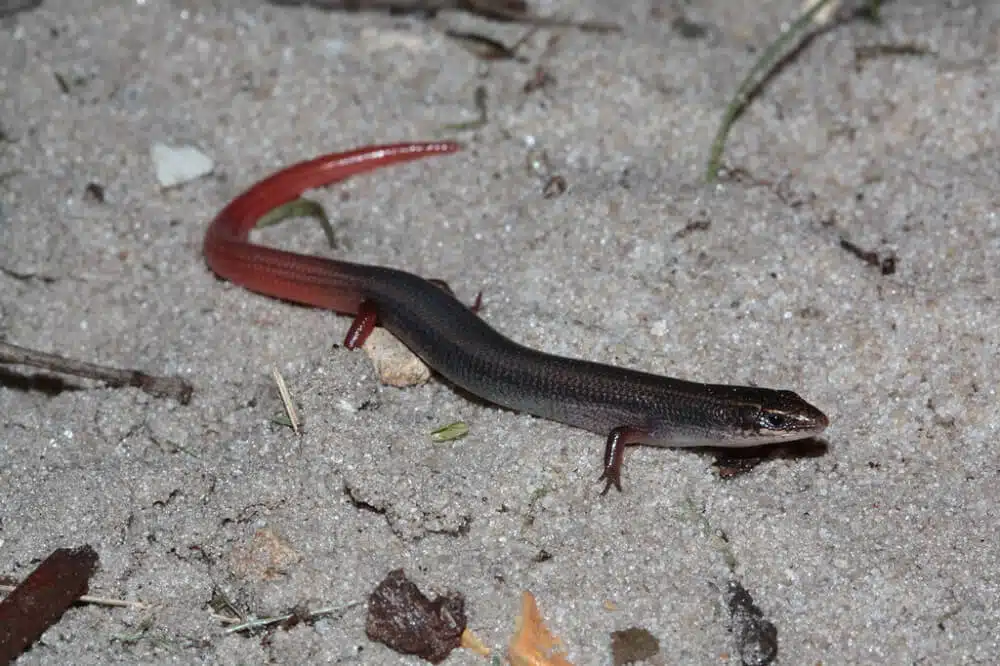
Mole Skinks (Plestiodon egregius) are among the few species of red-tailed lizards in Florida.
The species holds an endangered species status hear through diminishing numbers.
Still found in Central areas of Florida, Mole Skinks are facing a diminishing natural sandy habitat through urbanization and industrialization.
Mole Skinks also live in neighboring states. They can be found in Southern Alabama and Georgia.
Their status is also threatened in these states.
This species likes to live underground or in sandy areas where it looks for spiders and cockroaches to feed on.
It has an olive-gray color with gray stripes and a red tail.
Mole Skinks grow up to a size of 6.5 inches. Mating information is scarce, apart from egg-laying numbers.
Groups of eggs are laid by females after mating, probably in the ground, away from potential predators.
The habit of the species to live around the mounds of other species also exposes them to multiple predators.
Mole Skinks are commonly seen around rodent nests where they’re exposed to predators such as snakes.
3. Peters’s Rock Agama
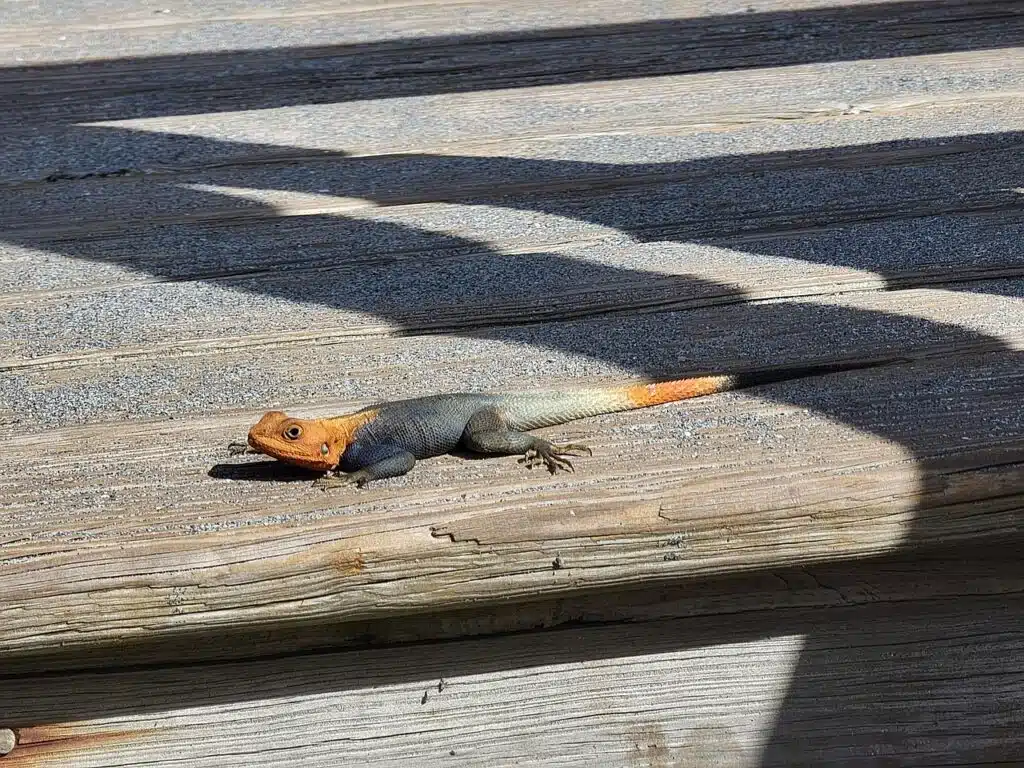
Peters’s Rock Agama (Agama picticauda) is a lizard species with an introduced status in Florida.
It has a West African origin and it has made it to North America through Florida.
High numbers of lizards have been spotted over the past few years, which confirms its settled status.
This is a species that has a redhead and a red tail, known to love sandy areas where it can dig through moist sand.
Lizards of this genus are never spotted alone as they tend to live in small groups.
Known to eat ants and other insects, these types of lizards can also look for food in groups.
They wait for insects to come close before moving toward them.
Apart from the ants many juveniles eat, these types of lizards may also eat grasshoppers, spiders, and other types of bugs.
4. Ocellated Gecko
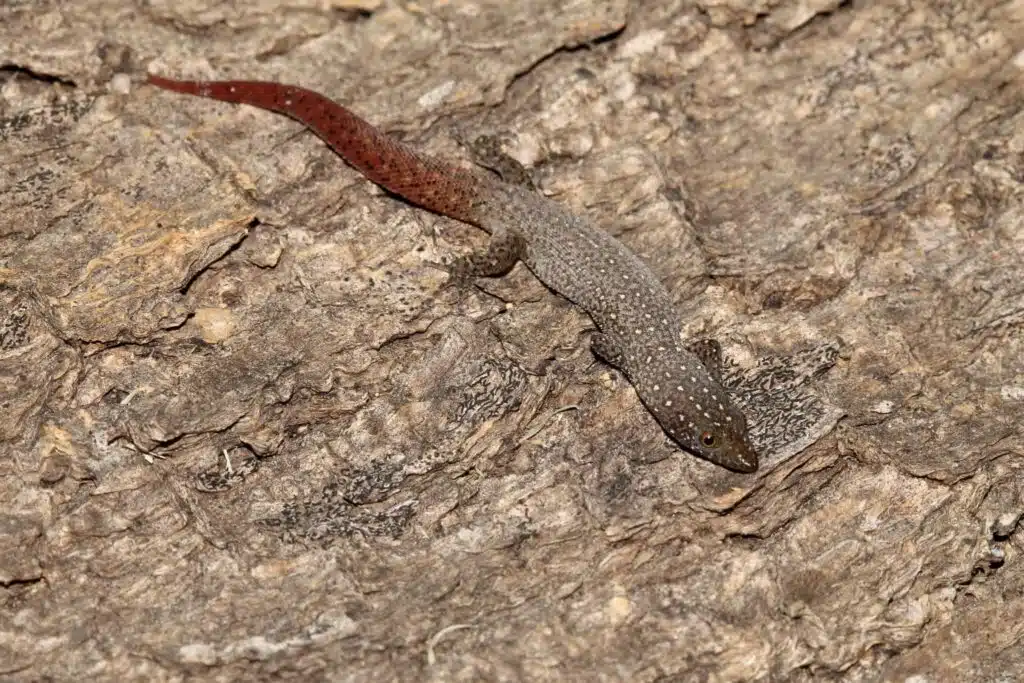
Ocellated Geckos (Sphaerodactylus argus) have a gray-yellow body with white and black spots. Its tail is red with dark red spots.
The lizard is named after the ocelli or eyespots on its body which are an anti-predator adaptation.
This species is native to Jamaica and Cuba, with an expansive habitat across Mexico and an introduced status in Florida.
Its Florida populations are stable, with a slower growth rate.
Woodlands in low-elevation areas are among its preferred habitats. It’s here that the species can thrive in higher humidity.
Florida populations are also seen around homes and other man-made structures.
Given it lives in Florida, Oceallated Geckos are known to prefer low elevations similar to those of sea level.
This species is known to eat crickets and even the larvae of different species of insects.
5. Common Dotted Garden Skink
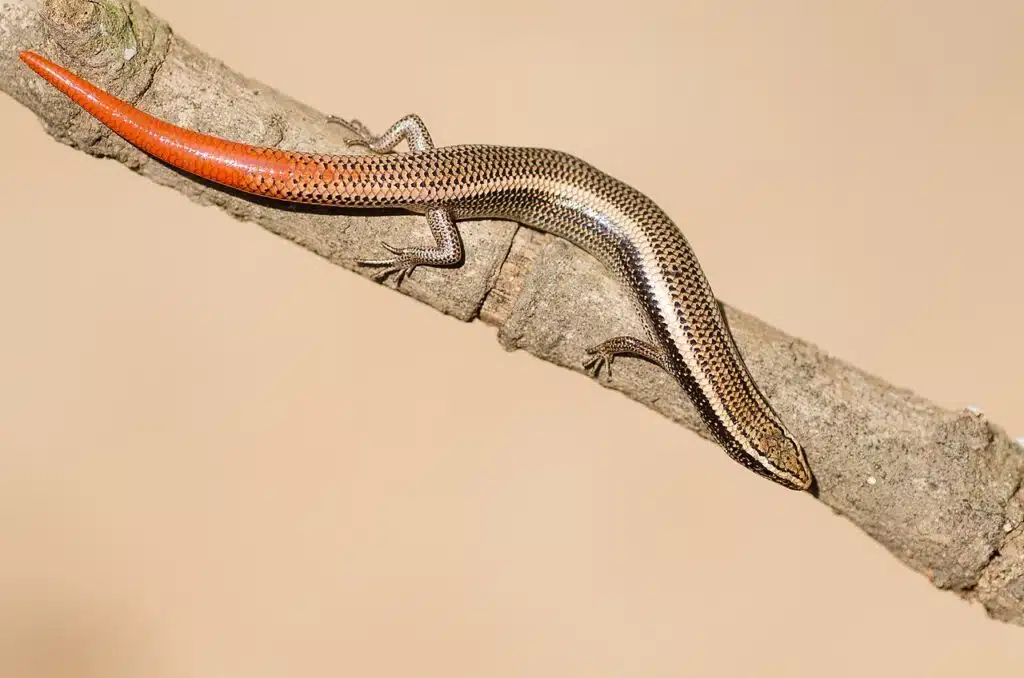
This type of skink lizard (Riopa punctata) is found in Asia and Africa.
Its name is derived from its spotted body. Tiny black spots are seen across its body and on its legs.
Lateral tan bands are also spotted on the dorsal side of the species. The tail of the lizard is red.
Uniform red is specific to the tip of the tail while the section closer to the body has black spots similar to those on the body.
Juveniles of the species lack the tan and black stripes seen just behind the head on adults.
Known to live in woodlands, the skink is mostly limited to habitats in or under ground-level leaves.
6. Sekukhune flat lizard
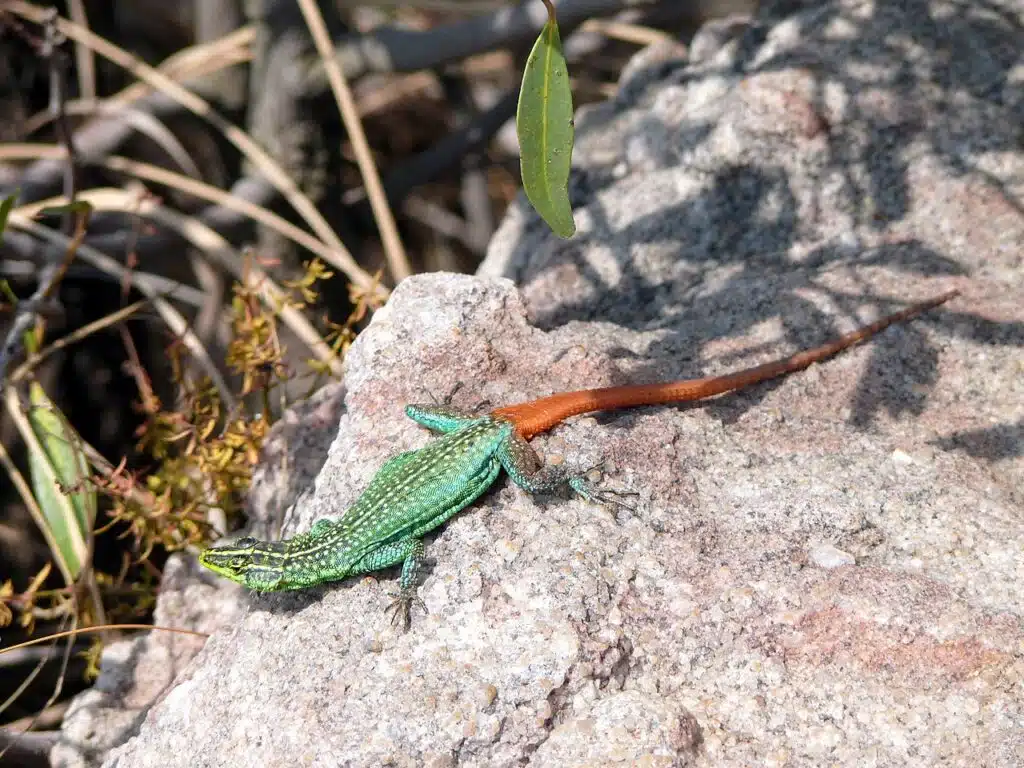
his rare species of lizard (Platysaurus orientalis) is only found in South Africa and as a pet around the world.
It has unique green and red coloring. Its green body has white dots and a central dorsal white line. Its tail is yellow and lacks the visible patterns of the body.
A light green color is specific to the underside of the lizard, including areas around its snout.
These lizards might have a limited habitat, but they have been studied for mating habits.
Female Sekukhune flat lizards only lay 2 eggs soon after mating.
They always seek out a naturally-sheltered area to lay the eggs in. Given they live on rocky terrains, they can lay the eggs next to or under rocks.
Sekukhune flat lizards can be spotted when they come out for food. They mostly consume flies and bugs.
7. Red-tailed Worm-lizard
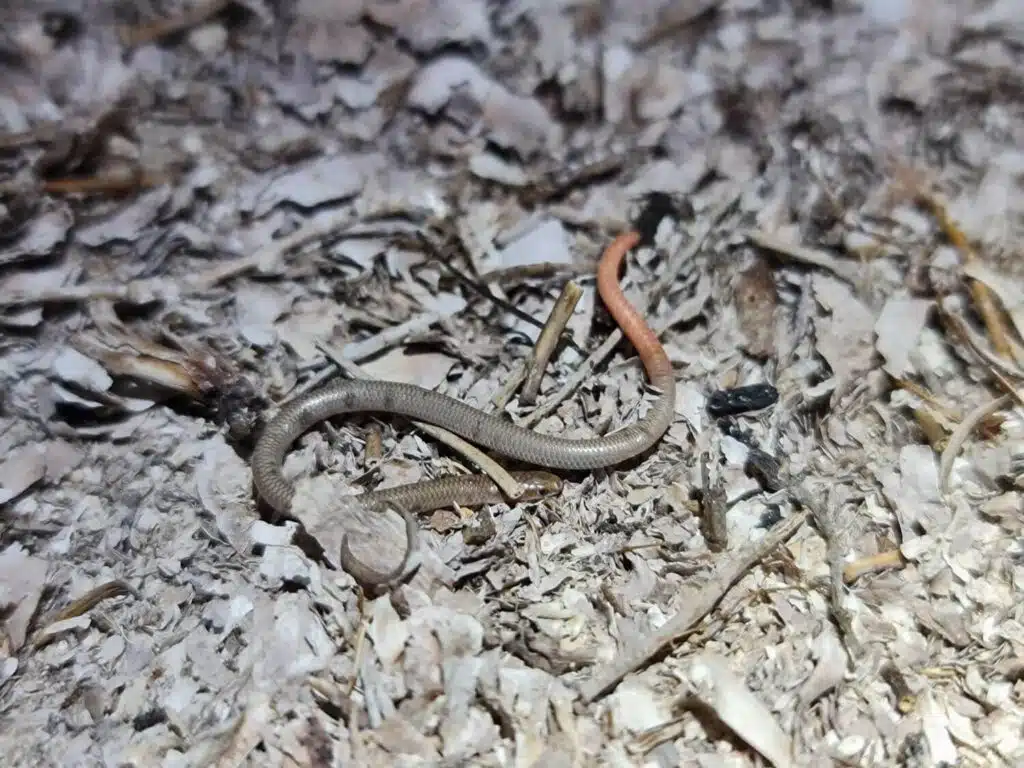
This type of lizard (Aprasia inaurita) gets its name from its worm-like appearance.
Similar to earthworms, the Red-tailed Worm-lizard has a red tail tip. The area around the snout is also red or pink-red.
Native to Australia, the Red-tailed Worm-lizard has a gray body.
Growing to a length of up to 6 inches, this species is found both in dry and humid habitats as it spends much of its time underground, in loose soil.
Only a small number of Red-tailed Worm-lizards survive in a few regions of Australia.
8. Redtail Tegu
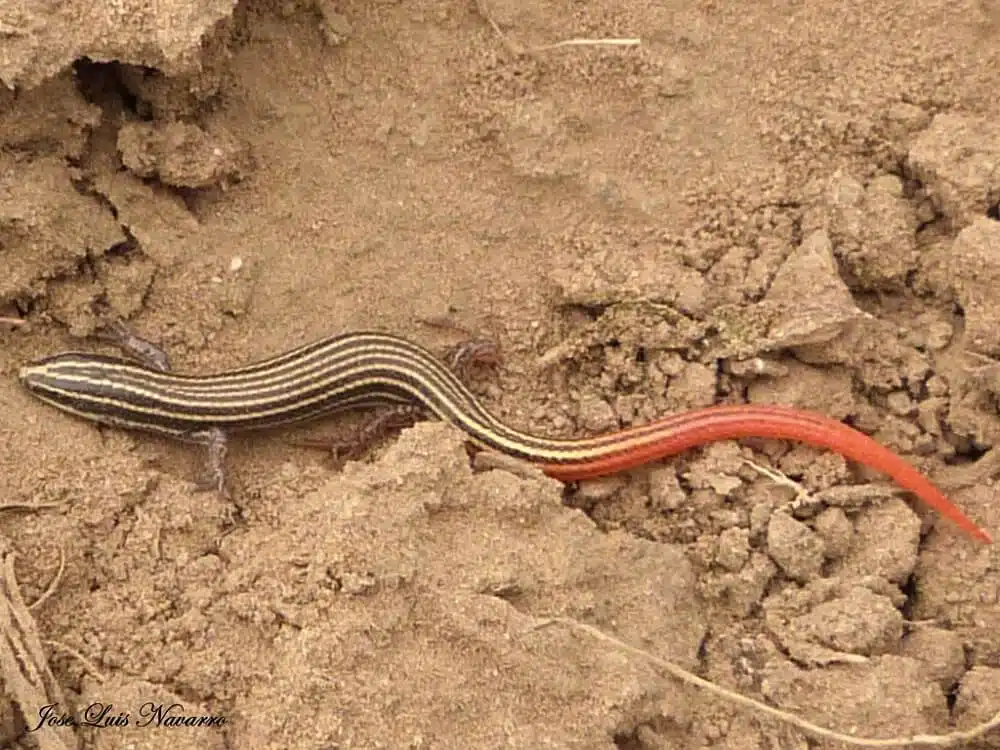
A South American native, The Redtail Tegu (Vanzosaura rubricauda) is a species common across Brazil’s forests.
This species has a dual-color body. Its tail and the lower part of the body are red.
A gray color with black stripes is specific to the upper body of the species. Dorsal coloring is based on contrasting stripes.
As the species gets older, its gray and black stripes become white and black, with added contrast.
Redtail Tegu lizards rely on contrasting colors and the red color of the tails to appear poisonous to their predators. The lizard isn’t poisonous, however.
9. Dussumier’s Litter Skink
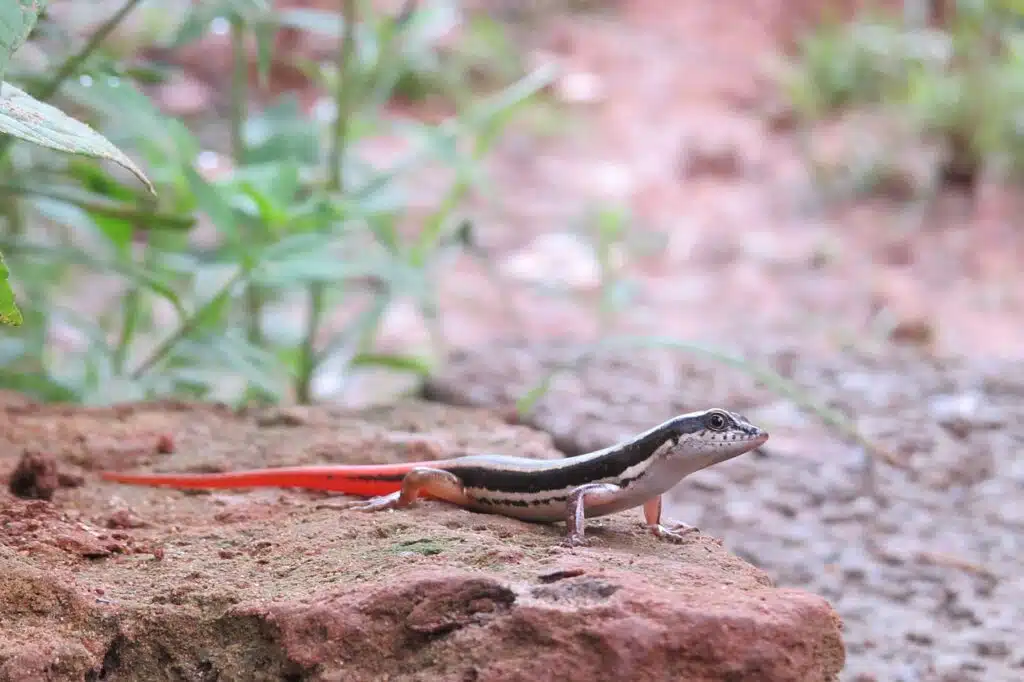
A red tail is also seen on Dussumier’s Litter Skink (Sphenomorphus dussumieri). Its tail has slight orange nuances while its body is characterized by contrasting stripes.
Black and yellow stripes cover the rest of its body. This species also has a black and yellow snout.
This species only lives in the Southwestern parts of India.
It likes the humidity here and it can be found in deciduous tree forests.
Dussumier’s Litter Skinks are diurnal and can even be seen around various orchards and plantations.
10. Ornate Scrub Lizard
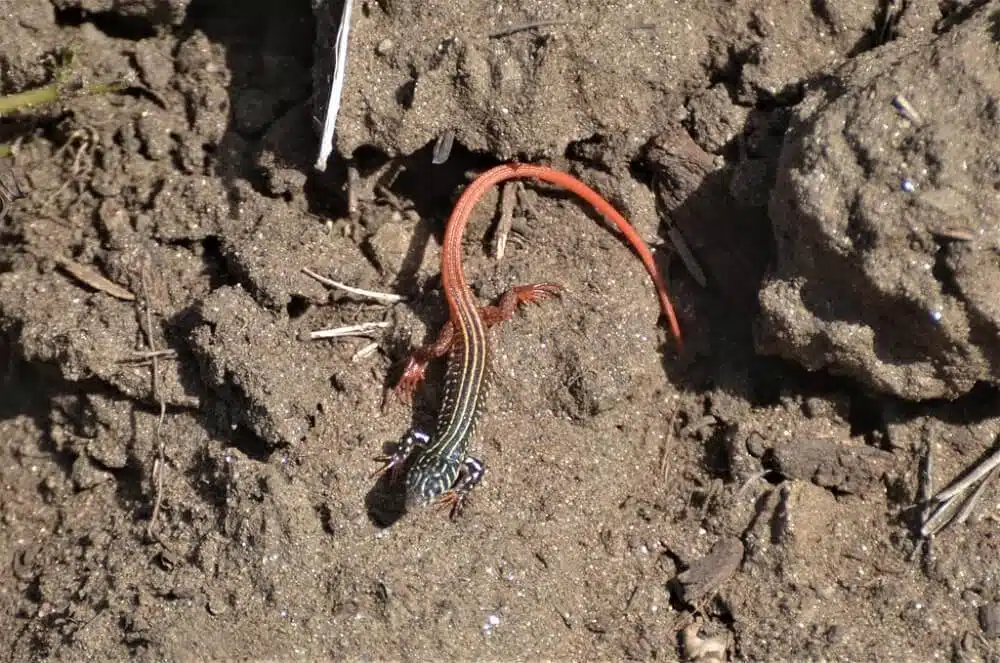
These types of lizards (Nucras ornata) get their name from their highly patterned body. The species has a red tail and a contrasting upper body.
A black body with white or gray colors is specific to the reptile.
These lizards have almost white underbelly coloring.
The red coloring isn’t only specific to the Ornate Scrub Lizard’s tail. It can also be partly seen on its dorsal side and its legs.
Growing up to a size of 5 inches, Orange Scrub Lizards are specific to Africa.
Western regions of Africa and Southern states such as Namibia are known hosts of the species.